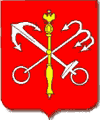About St. Petersburg.
TRIP TO ST. PETERSBURG
SAINT PETERSBURG
ABOUT ST. PETERSBURG
 
St. Petersburg has more tourists both from Russia and abroad than any other Russian city. If much of Russia recalls its Eastern rather than
Western roots, St Petersburg is where you'll feel Russia's European influences and aspirations. The city was founded under grueling
conditions by Peter the Great as his 'window on the West' at the only point where traditional Russian territory meets a seaway
to northern Europe. Built with 18th and 19th century European pomp and orderliness, mainly by European architects,
the result is a city that remains one of Europe's most beautiful.
The vistas of elegant buildings across the wide Neva River and along the canals and avenues recall Paris, Amsterdam,
Venice and Berlin.
The jolly onion domes of Moscow seem almost passé here, where a more Western outlook was taken at every stage
of planning and construction. Even the city's colors - the green and gold of the Winter Palace, the red beside the
Anichkov most (bridge), the blue of Smolny Cathedral -reflect a closer
stylistic allegiance to the courts of Europe than to the Kremlin. The buildings' playful baroque facades exude
the riotous opulence of tsarist Russia.
Yet as Western as you might be led to think the city is, there are reminders at every step that you are most assuredly in Russia, and that goes as much for the hustle and bustle of people with
little sense of personal space, as for the bristling, romantic joie de vivre that informs their earnest,
un-complex friendliness in social situations. Despite their well publicized problems,
residents affectionately call the city 'Piter' and swell with a pride you're unlikely to meet elsewhere in the country.
In St Petersburg, you feel history at every step; even Moscow is no match in this department. From here autocratic tsars ruled Russia for two centuries with the splendour and stubbornness that
partially led to their downfall at the hands of workers and soldiers in March 1917. The city's time as Russia's capital bequeathed it an artistic and entertainment scene which is still at least equal
to that of the current-day capital. Russian ballet was born in St Petersburg and the 19th century flowering of Russian music was
centered here. Nijinsky, Tchaikovsky and Rimsky-Korsakov, to name but a
few, spent important periods here. Pushkin was educated in, exiled from, readmitted to and killed in St Petersburg. Dostoevsky set Crime and Punishment here.
At one end of the cultural spectrum today are the Hermitage, one of the world's great art galleries, housed in the tsars' superb Winter Palace, and the Kirov Ballet, which has recently overshadowed
Moscow's Bolshoi. At the other end, St Petersburg has produced many of Russia's top rock bands and has witnessed a rebirth of avant-garde art.
St Petersburg's latitude - level with Seward, Alaska and Cape Farewell, Greenland - keeps it bright nearly 24 hours a day in midsummer but also ensures long, gray winters. From December to March,
when the Neva is ice and temperatures rarely exceed freezing, the endless nights have a twinkling magic. In summertime, the light, airy giddiness of long, warm days and a tireless festive spirit
combine with an ever-present Dostoevskian heaviness to produce a magical, unforgettable effect unique to the city.
St Petersburg sprawls across and around the delta of the Neva River, at the end of the easternmost arm of the Baltic Sea, the Gulf of Finland. Entering St Petersburg at its south-eastern comer, the
Neva first flows north and then west across the middle of the city, dividing there into several branches and forming the islands making up the delta. The two biggest branches, which diverge where the
Winter Palace stands on the south bank, are the Bolshaya (Big) Neva and Malaya (Small) Neva; they flow into the sea either side of
Vasilevsky Island.
The heart of St Petersburg is the area spreading back from the Winter Palace and the
Admiralty on the south bank, its skyline dominated by the golden dome of
St. Isaac's Cathedral. Nevsky
prospekt,
heading east-south-east from here, is the main drag, with many of the sights, shops and restaurants.
The northern side of the city is comprised of three main areas. The western
most is Vasilevsky Island, at whose east end - the Strelka - many of the city's fine early buildings still stand. The
middle area is Petrograd Side, a cluster of delta islands whose south end is marked by the tall gold spire of the SS Peter & Paul Cathedral. This is where the city began. The third, eastern, area
is Vyborg Side, stretching along the north bank of the Neva.
PAGES OF THE PICTURE ALBUM
|